 |
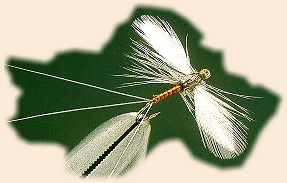 Soft Hackle Spinner |
|
|
Materials for the Soft Hackle Spinner:
Thread: Match color of the body. Tail: Mayfly tails. Body: Hareline's Premo goose biots. Shellback: Medallion sheeting. Wing: Hen neck. Thorax: Micro dry-fly dubbing. Hackle: Hen neck.
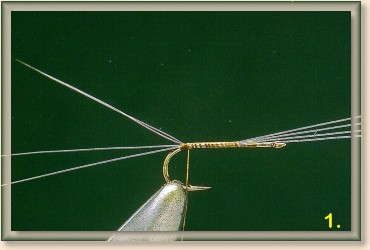 1. Tie in three or four mayfly tail fibers so that they extend out at least 1 1/2 times the length of the body. To separate them, take a turn of thread around the underside of the tail so that it lifts them up a little bit.
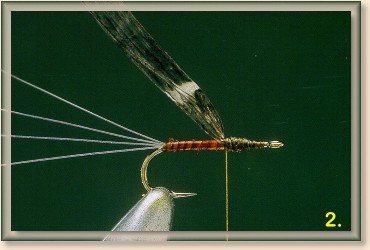 2. Tie in a biot by the tip so that the notch is facing backwards. Wrap it forward. You should be about 1/3 the way back from the hook eye. Tie in the sheeting for the wing case.
 3. Tie in the hckle and then the winds. Figure-eight through the wings so that they lay spent.
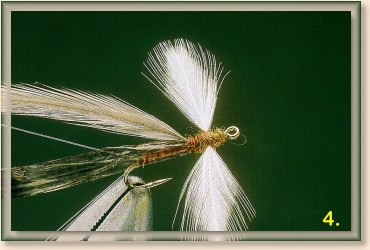 4. Figure-eight some dubbing around the wing and thorax area.)
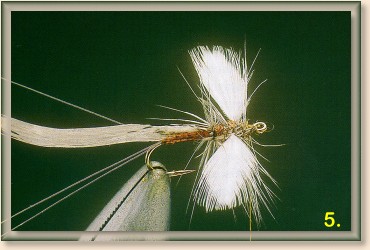 5. Wrap the hackle forward with one turn behind the wind and two turns in front of the wing. Cut the hackle flat on top of the fly and then pull the wing case over the top and tie down and off.
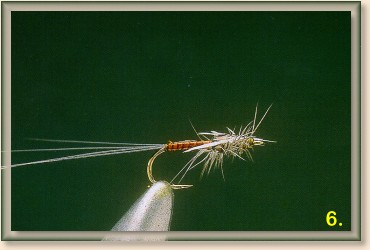 6. Pull the hackle fibers to the sides so that there is none on the bottom. If there are fibers sticking out the bottom, trim them off.
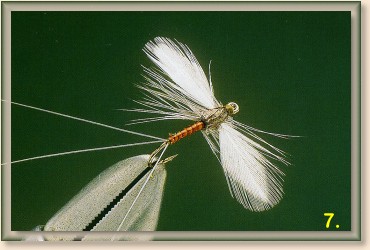 Top view. ~ SS Credit: The Soft Hackle Spinner is one of the many terrific mayfly patterns in Mayflies "Top To Bottom" published by Frank Amato Publications. For more great flies, check out: Beginning Fly Tying, Intermediate Fly Tying and Advanced Fly Tying.
|